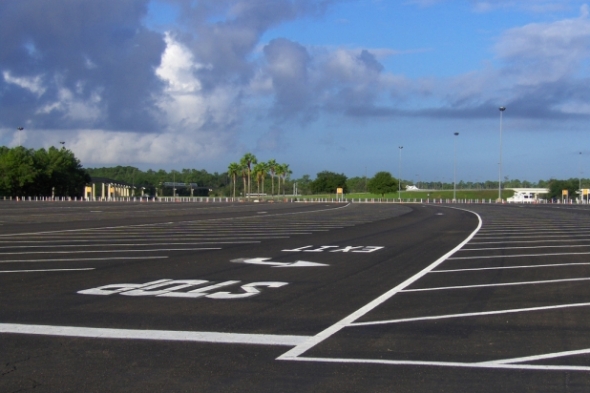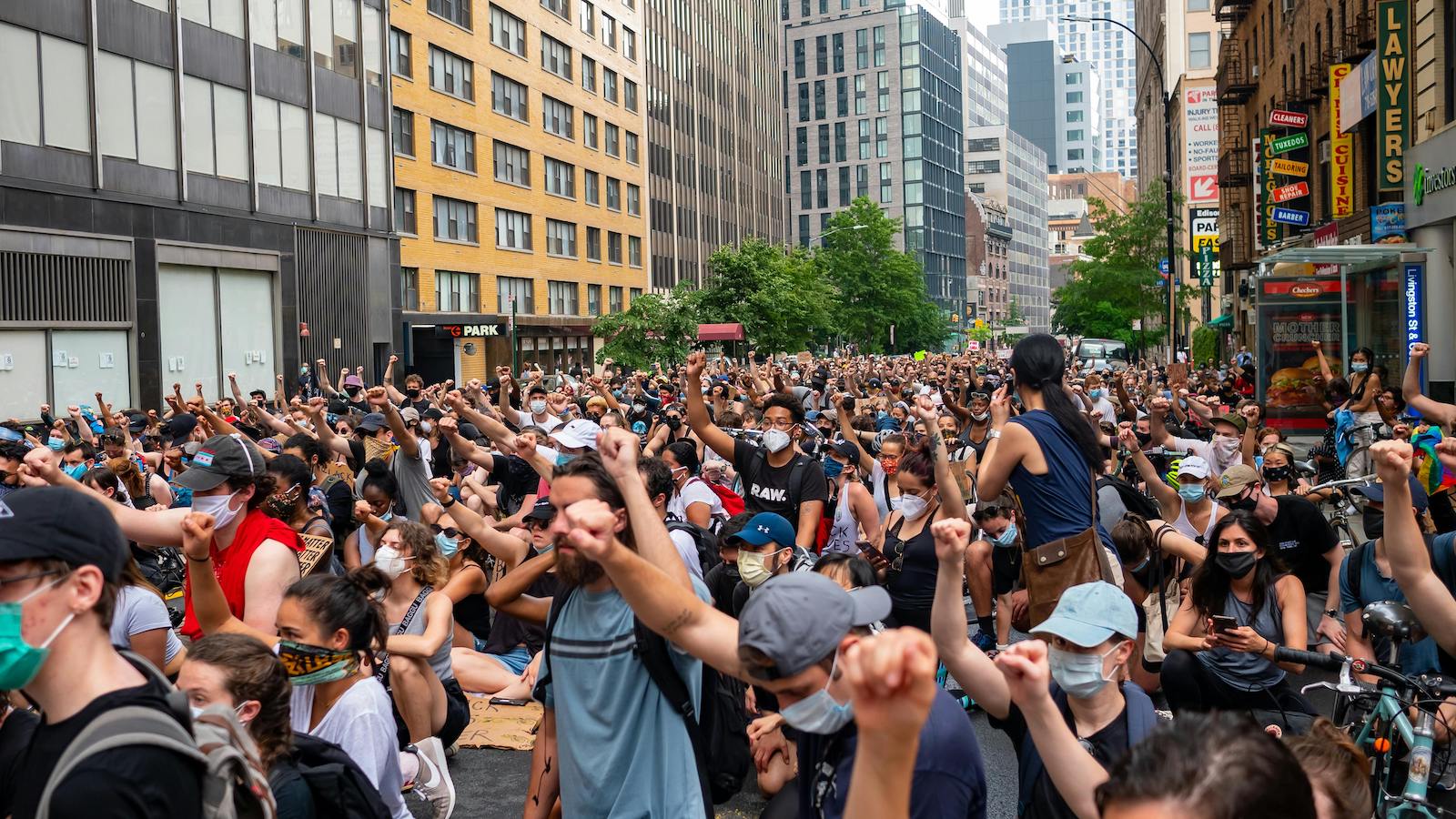Employees sometimes drive to work,
And then they find a parking spot,
Sometimes on a busy street,
Sometimes in a parking lot,
But injuries can still occur,
Between their cars and the front door,
And who will pay for slips and falls,
Will always be the Judge's call.
Such is the nursery rhyme sung to children of applicants' attorneys and defense lawyers in the dark and murky world of California workers' compensation.
This issue came up recently while I was having lunch with my brother-in-law, Jasper. Jasper had been doing well recently in the wheelbarrow industry, and wanted to expand his operations from his garage to a real factory. He invited me to lunch to present me with some exciting investment opportunities in the wheelbarrow industry. Currently, Jasper had his eye set on one location in particular because it came with a parking lot.
His plan was to set up a series of obstacles in the parking lot, in the hopes that the employee with poor agility and balance would sustain injury outside his factory and shield him from workers' compensation liability. Thus, only the workers that could swim faster than sharks, swing over quicksand pits, and tightrope over mine fields would actually make it to work.
Without getting into issues of serious and willful misconduct, for those readers out there that aren't Jasper, when you're facing a claim of injury in or near a parking lot, are you on the hook? Let's start with the basics.
In order for an injury to fall within the scope of California's workers' compensation system, as opposed to general civil tort, the injury must arise out of and occur within the course of employment (See Labor Code section 3600). This is commonly referred to as AOE/COE (Arising Out of Employment, in the Course of Employment). Generally speaking, injuries sustained during the regular commute to or from work are not compensable, unless they fit into one of several exceptions.
But what about that last stretch of travel, between the car door and the building door?
In the case of Lewis v. WCAB, Lewis parked in a lot leased for employees. Walking down the street to her office, three blocks away, she fell. In finding the claim compensable, the Supreme Court reasoned that there is a "reasonable margin of time and space necessary to be used in passing to and from the place where the work is to be done" included within the scope of employment.
The Court went further, noting that once the employee enters the premises under the control of the employer, including employer-owned parking lots, the commute has ended and the scope of employment has begun (See Santa Rosa Junior College v. WCAB, footnote 11).
By providing an employee parking lot, Jasper could very well find himself increasing his liability with every square foot of parking under his control.
At this, Jasper got nervous and decided his plan would have to be changed. Instead, he would have his employees park on the street and use the entire lot for more obstacles. After all, he read an article in Wheelbarrows and Workers' Comp, a very limited-circulation magazine which only exists in this story, which discussed a similar idea. There, the article's author discussed two cases.
The first, an unpublished decision by the Court of Appeal, was Sharp Coronado Hospital v. WCAB. There, the Court held that an employee asked by its employer to park on the street instead of the parking lot was precluded from recovering for an injury sustained while walking from the employee's parked car to the hospital. The other, General Insurance Co. v. WCAB, held that an employee struck while crossing the street from his parked car to work could not recover because of the going and coming rule.
Furthermore, he had heard his friend, an applicants' attorney, grumbling about the panel decision in the case of Sharon Ewegemi v. Oakland Unified School District. In that case, he understood, a teacher had parked her car on the street and was just a few feet from the door of her school when she turned back to get some papers from her car. Walking to her car, she tripped and fell in the street.
In denying her application, the Workers' Compensation Appeals Board reasoned that, until she entered the school and began working, she was still engaged in her commute, even up to a few feet away from the school.
Jasper's new plan could put all this into use, he thought, by having his employees cross the obstacle course before entering the front door.
Now, bear in mind, dear readers, this is my brother-in-law, so things had to be stated delicately, or else every Thanksgiving dinner would include Jasper mumbling about how he hopes I come see his snake-pit. So, I had to explain that his new idea wouldn't exactly work, either.
So, as I side-stepped the issue of intentionally exposing workers to snake-pits, quicksand, and landmines, I gently pointed out that he might still be liable for injuries sustained in his parking lot because of the "special risk" doctrine, which makes injuries sustained during travel to work compensable if the employee is exposed to a risk of injury, for the benefit of the employer, to which the general public is not exposed.
For example, the applicant in the case of Sandra Parks v. Workers' Compensation Appeals Board, was attacked two car lengths down the street from the employer-provided parking lot, as she was boxed in by school children crossing the street and other cars behind her. In finding the injury compensable, the Court of Appeal reasoned that the car's immobility caused by school children crossing the street was a special risk, and thus compensable.
Similar results were reached in R. G. Greydanus v. Industrial Accident Commission and John Freire v. Matson Navigation Company. In Greydanus, a dairy employee who had to turn left across a busy road to pull into the dairy farm was found to be exposed to a special risk because of the dangerous turn.
Likewise, in Freire, a janitor who worked aboard a steamship could only reach the ship by walking across a public bulkhead. The walk across the bulkhead was found to be a special risk, and the injury, though sustained some distance away from the ship itself, was found compensable.
Jasper looked deeply saddened as his eyes became watery and he glanced down at his blueprint. Where, before, the set of American Gladiator was reborn in his parking lot, now remained only painted lines between which employees could park their cars before proceeding to work.
Frustrated, Jasper shoved his blueprint aside and decided he wouldn't have a parking lot at all. As he angrily stared out the window, no doubt jealously glaring at the restaurant's parking lot, your humble author felt compelled to give some good news.
"Cheer up," I told my brother-in-law, Jasper. "Not all injuries sustained in parking lots are compensable." At that, Jasper seemed to rekindle the possibility of a parking lot obstacle course and he began to listen closely.
For example, in the case of Jessica Rodgers v. Workers' Compensation Appeals Board, an employee took a break from work to go to the bank. She then returned to the work parking lot and arranged her money before stepping out of her car and returning to work. In between her car and the building, however, a "biker," who had followed her from the bank, attacked her and stole her money.
Even though the injury was sustained during work hours, between starting and finishing the day's shift, and in the employer parking lot, the Court of Appeal held that the injury was not compensable because the cause of the injury was formed independent of any work-related activity — the biker just wanted to rob her, regardless of where she worked or who she was.
Likewise, in the panel decision of Basil Perkins v. City of Los Angeles, the applicant, a city animal control officer, was shot while napping in his work vehicle, while parked in the employer-owned lot, and wearing his uniform. As his home was over 130 miles away, he made a regular practice of napping in his car after a shift had ended.
Initially, the workers' compensation judge found the injury compensable, but the Workers' Compensation Appeals Board reversed, finding the injury was not compensable, as the shift had ended, and the employee was only in the parking lot for his convenience. In other words, the scope of employment cannot be artificially extended by dallying on the employer's premises.
The same occurred when a worker arrived to work too early, as in the writ denied case of Paul Grove (Dec'd), Sharon Grove (Widow) v. Miller Coors, LLC. In that case, the employee had arrived to work early and had used the restroom at work less than two hours before the start of his shift, when he sustained an injury in the restroom. There, the workers' compensation Judge found the injury to be non-compensable.
Fortunately, Jasper never got to try out his obstacle course idea — the wheelbarrow industry took a downturn, and he decided expanding beyond his garage was not a good idea at this time. Regardless, here are some takeaway rules:
- Arriving at an employer-owned or provided parking lot begins the scope of the employment relationship and ends the commute, so long as the arrival is within the regular time for employment.
- If travel to the employer or the employer's parking lot presents a "special risk" to the employees, then the time during which the employee is exposed to the risk will not be barred by the Going and Coming Rule.
- Injuries sustained in an employer-provided parking lot are subject to AOE/COE analysis, so injuries sustained for reasons unrelated to work, such as robberies, will not be compensable, unless the special risk doctrine applies.
- Whatever the liability for workers' compensation, the "Going and Coming" rule is not subject to the premises rule for civil liability and respondeat superior, as found by the Court of Appeal in Dean Hartline v. Kaiser Foundation Hospitals.
- Do not invest in the wheelbarrow market if the president of your company is busy planning an obstacle course for his employees trying to get to work.





